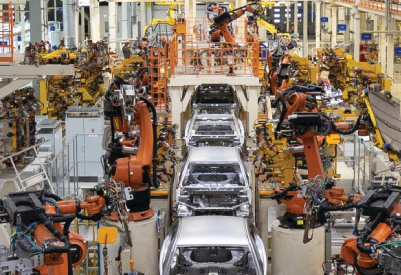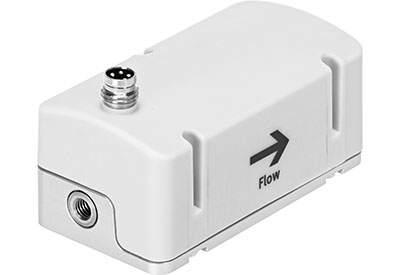Ontario Expands Largest Competitive Energy Procurement in Province’s History
December 11, 2024

7,500 megawatts of new energy resources will support growing population and help keep electricity costs down
The Ontario government is expanding the largest competitive energy procurement in the province’s history by 50 per cent to meet soaring energy demand. The government has increased the target for the procurement from 5,000 megawatts (MW) to up to 7,500 MW to ensure Ontario has the reliable and affordable electricity it needs to power the building of new homes, businesses and communities.
Since the procurement was first announced, Ontario’s Independent Electricity System Operator (IESO) has released an updated electricity demand forecast which now shows the province will need 75 per cent more electricity by 2050, the equivalent of adding four and a half cities the size of Toronto to the grid. To meet this growing demand, the government directed IESO to begin the government’s Second Long-Term Procurement (LT2) and implement the increased procurement target.
“Our government is expanding what is already the largest competitive procurement in the province’s history as demand for electricity continues to grow,” said Stephen Lecce, Minister of Energy and Electrification. “This expanded procurement will deliver enough power for 1.6 million homes, which is critical as our population and economy continue to grow. Unlike the former government which allowed hydro rates to soar, we are keeping costs down by planning ahead and using competitive procurement.”
Consistent with previous direction, the procurement process for LT2 will be transparent, competitive, and technology-agnostic to secure the lowest cost energy resources. The process will also protect prime agricultural areas, promote Indigenous partnerships, and encourage development in northern Ontario, where there is local community support.
Alongside the launch of the LT2 procurement, the government has asked the IESO to report back on options to run two additional procurements as part of the government’s all-of-the-above approach that is leveraging every resource to keep energy costs down for families and businesses, including:
- Options for a procurement of long-lead energy resources, including hydro and long-duration energy storage, recognizing the benefits of these unique resources that require more time to design and build.
- Options for a program to re-contract existing and acquire new-build small-scale electricity generation, such as smaller solar installations, that connect directly to the province’s distribution system.
“Access to sufficient, sustainable, and affordable energy is not just vital to helping businesses grow, it’s also a key factor in attracting new businesses and investment,” said Jaipaul Massey-Singh, CEO, Brampton Board of Trade. “This announcement by the Ontario government will help our province continue to be a premier destination for industry and help our economy grow.”
Procuring new long-term energy generation is just one part of Ontario’s Affordable Energy Future, the government’s vision as it plans for rising energy demand, which includes:
- Energy Planning – Developing the province’s first integrated energy plan, including a broad range of energy resources, such as electricity, natural gas, and other fuels to ensure the province’s energy needs are met in a coordinated and long-term manner.
- Nuclear Energy – Advancing clean, reliable, and affordable nuclear power through pre-development work at Bruce Power on the province’s first large-scale nuclear build in 30 years, four small modular reactors at Darlington and supporting OPG’s plan for refurbishing the Pickering Nuclear Generation Station.
- New Transmission Infrastructure – Designating and prioritizing transmission lines in Southwestern, Northeastern and Eastern Ontario that will power job creators, including EV and EV battery manufacturing and clean steel production.
- Keeping Costs Down – Expanding energy efficiency programs which are helping families and businesses reduce electricity usage and save money on energy bills.
Quick Facts
- Ontario’s electricity system is among the cleanest in the world, powered by a diverse supply mix including nuclear, hydroelectric, renewables, natural gas, and biomass.
- The Second Long-Term Procurement (LT2) will secure new electricity resources through two streams:
- An energy stream which will secure up to 14 terawatt-hours (TWh) of new energy resources; and
- A capacity stream which will secure up to 1,600 megawatts (MW) of new capacity resources.
- Resources must be able to start commercial operations by May 1, 2034. All procured resources will be offered 20-year contracts, awarded annually between 2026 and 2029. Contracts will only be offered to projects with local community support, empowering municipalities by maintaining their decision-making authority throughout the procurement.
- Through recent competitive procurements, the Ontario government secured nearly 3,000 MW of new battery storage capacity, including the largest battery storage procurement in Canada’s history.
- The IESO has forecast that by 2050, Ontario’s electricity consumption will rise by 75 per cent. This demand stems primarily from Ontario’s rapid increase in population, new manufacturing facilities, advanced technologies like artificial intelligence (AI) data centres, the electrification of industry, and the charging energy required for electric vehicles.
Quotes
“It is clear that Ontario’s electricity sector is at a critical juncture, and today’s announcement means we are moving forward with bigger procurement targets at a faster pace to enable our province’s growth. We are now set to launch the largest procurement in decades to ensure Ontario’s electricity system can continue to provide affordable and reliable electricity for people and communities.”
– Lesley Gallinger
President and CEO, IESO
“AMO applauds the Ontario government for launching LT2 and setting direction on additional procurements to ensure Ontario keeps up with increasing energy demand. With municipalities continuing to have an important role in project approval, we are committed to working with the province and energy builders to support a transition to a clean, reliable, and affordable electrical system.”
– Robin Jones
President of AMO and Mayor of Westport
“Canada’s wind, solar and energy storage industry is excited to welcome the Ontario government’s expanded LT2 electricity procurement. Together with local community and Indigenous partners, our members are ready to compete for the opportunity to provide affordable, reliable and clean electricity to Ontario families and businesses.”
– Vittoria Bellissimo
President and CEO, Canadian Renewable Energy Association (CanREA)
“We applaud the Ontario government, and the Minister of Energy & Electrification, Stephen Lecce, for taking an ‘all-of-the-above’ approach in the expansion of the ongoing procurement process, particularly the addition of 1,600 MW of capacity to the second Long-Term Procurement (LT2) and the request for an evaluation from the IESO regarding the unique benefits of long-lead energy resources, like long-duration energy storage. Leveraging the full value of energy storage assets, including long-duration storage, will be critical to ensuring the province meets its future electricity needs, while ensuring reliable, flexible, and affordable energy is readily available to ratepayers.”
– Justin W. Rangooni
Executive Director, Energy Storage Canada
Related Story
Ontario Tackles Energy Demand by Introducing Affordable Energy Act
The Ontario government is introducing legislation that would, if passed, enable the implementation of the province’s first-ever integrated energy plan which will ensure the entire energy sector is aligned behind the government’s pro-growth agenda. The Affordable Energy Act would also prioritize zero-emissions nuclear energy as the province’s grid expands, support the government’s significant expansion of energy efficiency programs to help families save money, help get more electric vehicle (EV) chargers built and reduce “last-mile” connection costs for electricity infrastructure.
Province Launches Largest Competitive Energy Procurement in Ontario History
The Ontario government is launching the largest competitive energy procurement in the province’s history, focused on generating affordable electricity for families and businesses. This builds on the province’s plan to procure up to 5,000 megawatts (MW) of energy through a series of procurements to help foster economic prosperity and meet the growing demand for clean and reliable energy.





